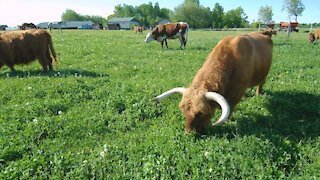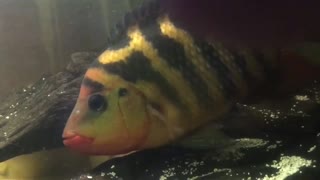Premium Only Content

The Evolutionary Biology of a Himalayan Species and More with Dr. Himender Bharti
Even in the wind-swept, mountainous regions of Himalaya, ants move forward in their rugged life cycles. Dr. Himender Bharti shares how these ants survive in such areas, including the molecular phylogeny and the chemical ecology of ants that must reproduce in very short warm seasons.
Listen and learn
Why he describes ants as sitting at the "pinnacle" of insect social evolution,
How one of his favorite ant species in genus Myrmica manages to survive under the extreme conditions of the Himalayas, and
Where ant evolution sits in the larger picture of natural history.
Dr. Himender Bharti holds a position with the Department of Zoology and Environmental Sciences and runs the Ants Systematics and Molecular Biology Lab at Punjabi University. Ants have always been his passion, and though he started his academic research on saw flies, he acquired funding to focus fully on ant research and hasn't looked back.
In fact, in the past 20 years he has described about 100 formerly-unknown ant species from India and other Southeast Asian countries. He paints a picture for why ants have always fascinated him, and sees their place in insect life as analogous to where humans sit in relation to other mammals. From their social organization to how they interact with each other, from their developmental patterns to their life history and division of labor, their inspiring factors are numerous.
Dr. Bharti was also able to open up the understudied ant life and evolutionary history of species in regions in India and surrounding areas. He shares details about one of his favorite species of genus Myrmica, one endemic to Himalaya and central Asia. Such high altitudes lead to a very different life history than what is more common in tropical regions. Their response to the environmental interruptions of scarcity of resources and higher elevation make for interesting behaviors and gene regulation. He describes some of these behaviors, including workers eating some of the brood stages in order to make it through winter.
Listen in for more intriguing and little known ant facts.
For more about his work, see his website: antdiversityindia.com.
Available on Apple Podcasts: apple.co/2Os0myK
-
 34:02
34:02
FGP
10 days ago🌟 Healing Beyond Limits: Personalized Precision Medicine For Cancer Care & Longevity 🌿🩺✨
26 -
 0:42
0:42
caketime
4 years agoMore beautiful cake with rainbow colors
87 -
 4:06
4:06
KNXV
4 years agoCheryl Kramer Kaye talks healthy hair with Hair Biology
14 -
 0:55
0:55
KTNV
4 years agoDiego the tortoise credited with saving his species
2 -
 7:17
7:17
ChumskyBearEducation
4 years agoLearn about Frogs with Chumsky Bear! | Biology | Educational Videos for Kids
48 -
 1:28
1:28
ANTICOMMIE1776
4 years agoFun with dogs and more
86 -
 3:23
3:23
PigeonRiverFarm
4 years agoMulti species grazing
281 -
 0:52
0:52
Pete's Fish
4 years agoMore Festae with Fry Fun
552 -
 2:25
2:25
WXYZ
4 years agoMore clouds with snow on the way
17 -
 4:02
4:02
CoQWarrior23
4 years agoMore Karaoke With Dad
29